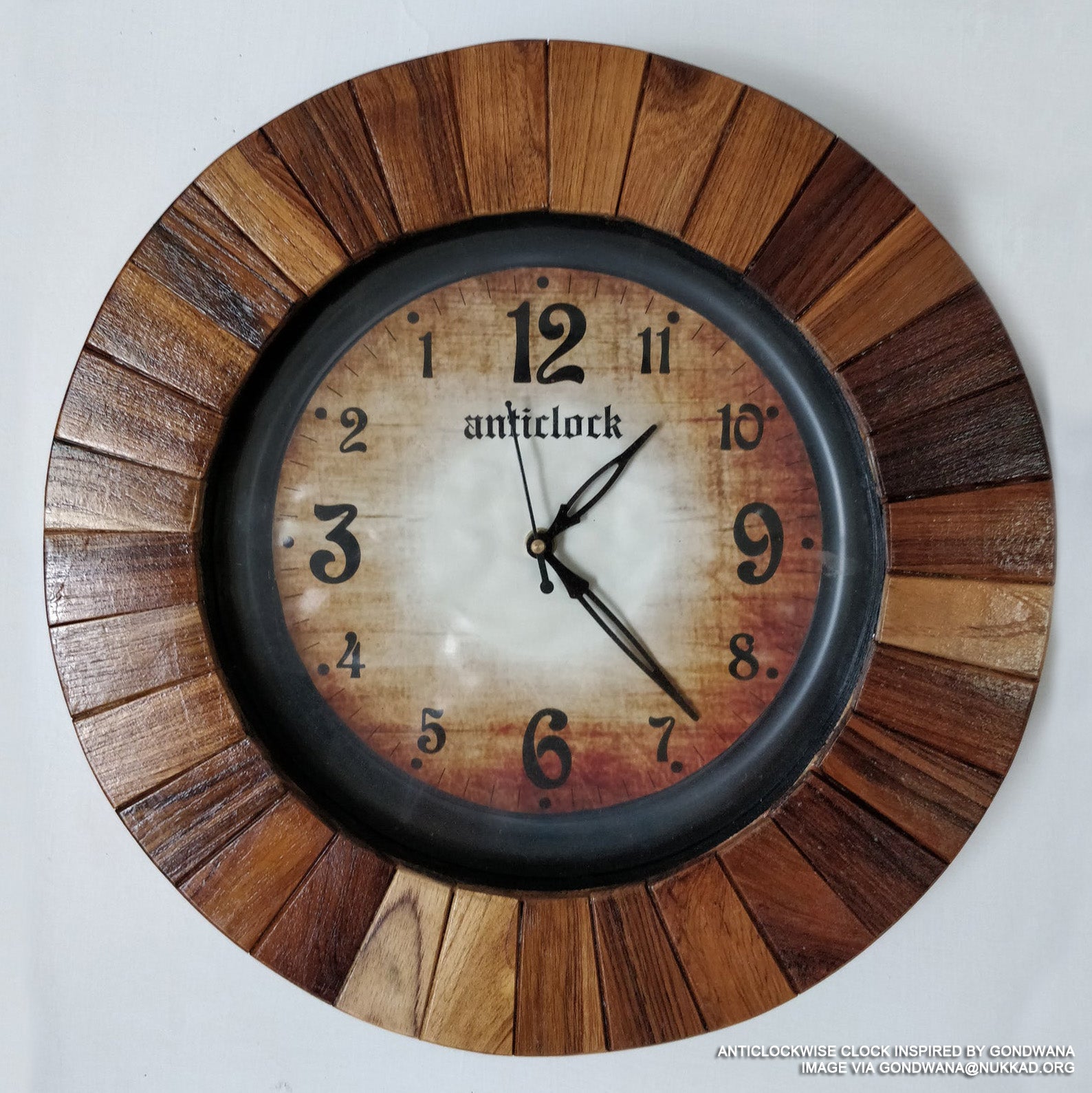Menu
-
-
Watch Bands for SEIKO
-
Customized Watch Bands
-
STRAIGHT Watch Bands
-
-
Quick Release
-
LEATHER & RUBBER
-
Accessories
- Login
-
English

Why Clocks Run Clockwise?
May 17, 2022 5 min read 2 Comments

As kids, one of the first things we learned about clockwise is that when something moves in the same direction as the hands on the clock, it is moving in a clockwise direction while when it moves in an opposite direction, it is moving in an anti-clockwise direction.
As pretty straightforward as this sound, it doesn't answer certain important questions in the minds of inquisitive youngsters. We'll discuss everything you need to know about clockwise in this article.
What does Clockwise mean?
Clockwise is used to describe a movement that goes in the same direction as a clock’s hands—from the top to the right, then down and then to the left, and back up to the top.
Asides from this being the way time is told, it is also how the earth moves. In the northern hemisphere, the earth rotates counterclockwise while in the southern hemisphere, the earth moves in a clockwise direction.
However, clocks turn in the clockwise direction because of sundials - the first clocks.
What does Counterclockwise mean?
Counterclockwise, also known as anti-clockwise, is the complete opposite of clockwise direction. Counterclockwise rotation starts from the top position, goes to the left side, proceeds down to the bottom position, then heads to the right side, and finally ends up on the top position.
Why clocks go clockwise
The earliest clocks/timepieces were sundials. Sundials thought ancient, but still existing in some parts of the world, use the shadow of the sun to tell the time.
 The earliest ancient sundials, image credit : youtube@wikiHow
The earliest ancient sundials, image credit : youtube@wikiHow
The dial's shadow moves in a clockwise direction as the sun moves through the sky. This means that the sun appears to move across the sky in a clockwise direction. So, when clocks were being developed their hands were made to turn in the same direction.
Why Do The Earth And Moon Turn Counter-clockwise And Our Clocks Turn Clockwise?
The Moon rotates around the Earth and in turn, the Earth orbits the Sun. The Moon rotates the Earth in a counter-clockwise direction.
And the Earth rotates the Sun counterclockwise because of the material it is made from. The earth is made from a material that supports rotating counterclockwise.
 The Earth, Moon, and Sun System with the orrery, image credit : youtube@MooMooMath and Science
The Earth, Moon, and Sun System with the orrery, image credit : youtube@MooMooMath and Science
When clocks were invented, they were manufactured to move in the direction of the Sun which is why the hands of the clocks rotate in a clockwise direction.
So, the direction the Earth and the clock happen to rotate in opposite directions.
The scientific fact of Clock and Watches
Clocks and watches are both timepieces, the only fundamental difference between them is that the clock is mounted on the wall while the watch is strapped to the wrist.
Clocks are one of the oldest human inventions that are still being used in homes today. Its name is derived from the Latin word 'cloca', which means 'bell’ because it is an instrument for calculating time.
Over the years, the invention has evolved. Formerly, clocks were invented to be only hung on walls, today, it is not necessary because inventors have invented small clocks - table and pocket clocks - which were very challenging for them to invent at the beginning.
Clocks could be interesting showpieces to demonstrate skilled craftsmanship or less expensive, mass-produced items for domestic use.
Two centuries after, in the 15th century, watches were first invented in Europe and since then, they have become very advanced.
People used to carry watches in their pockets, or hands, or they were attached to a chain, but now it is worn on the wrist and there is lots of improvement in technology.
Asides from telling the time, you can see the date, month and year with watches. Different types of watches that are user-friendly are also available in the market.
Here are some of the different types of watches available in the market below:
Analog Watch
Analog watches have a miniature clock face with 12 hours, an hour hand, and a minute hand; a few of them also have a second hand. There are analogue watches with traditional numbers and analogue watches with Roman numerals. Most analogue watches have marks representing the 60 minutes in an hour. Also, called an Analogue Watch.

Analogue watch like this Daniel Wellington has stick indexes instead of numerals, classic paired with MiLTAT Perlon Watch Strap
Digital Watch
A digital watch displays the hours, minutes, and sometimes seconds using digits instead of hands on the dial.
Automatic Watch
An automatic watch is a watch that operates due to the regular motion of the wearer’s wrist. Automatic wristwatches don’t need winding if worn daily. When the arm is moved, a metal weight known as a rotor spins to store the energy which is then used to power the watch and keep it going at night or while the watch isn’t being worn.
IWC Big Pilot Watch 5002 paired with the Beta White IVA from UK Haveston Strap
Chronograph Watch
The chronograph is a fancy word for “stopwatch.” So, a chronograph watch is a regular watch with the function of a stopwatch. Using the chronograph function is easy, just press the start/stop button on the side of the watch to start or stop the stopwatch; push the bottom button to reset back to zero. The chronograph function also lets you know time races and events.
Omega Seamaster Diver 300M Co‑Axial Chronograph 44mm paired with Strong Texture Nylon watch strap
Diving Watch
These watches are designed to be worn underwater. The typical diver’s watch will have a water resistance of around 200 to 300 m (660 to 980 ft), though, with the latest invention and modern technology, diving watches can now go much deeper.

Jaeger-leCoultre Q186T670 Boutique Limited Edition paired with Ribbed Nylon Watch Strap
Are All Watches Clockwise?
No! Not all watches are clockwise, some are anticlockwise, and however, anticlockwise watches are extremely rare. In central India, there is a state called Chhattisgarh. Here, there is a region known as Gondwana. Within that region, you will find people who have adopted counterclockwise clocks.
 Anticlockwise clock inspired by the Gondwana tribal community in Madhya Pradesh of India, image credit : nukkad.org
Anticlockwise clock inspired by the Gondwana tribal community in Madhya Pradesh of India, image credit : nukkad.org
 Seiko "Turtle" Reverse 6309-7040, truly a fantastic Seiko Mod (image by: Chez Joe@flickr.com)
Seiko "Turtle" Reverse 6309-7040, truly a fantastic Seiko Mod (image by: Chez Joe@flickr.com)
External References:
Written by Victor, images by Toni and others as noted
2 Responses
Nikolay
May 27, 2022
May I ask, what is the Seiko diver watch in the email you’ve sent with link to this article?
Leave a comment
Comments will be approved before showing up.
Also in The Latest Watches & Watch Band News

From Lens to Timepiece Leica Unveils Stunning ZM 12 Watch Collection
April 10, 2025 4 min read 1 Comment
Read More
IFL Watches Citizen Tsuyosa Concept Collection: An Artistic Tribute to Japan
April 01, 2025 4 min read
Read MoreBe the first to know
Sign up to get the latest on Sales | New Releases & more …





Strapcode
May 27, 2022
Hi Nikolay,
This is a fantastic Seiko Mod Seiko “Turtle” Reverse 6309-7040, image source: Chez Joe@flickr.com.
Thank you!
Strapcode team